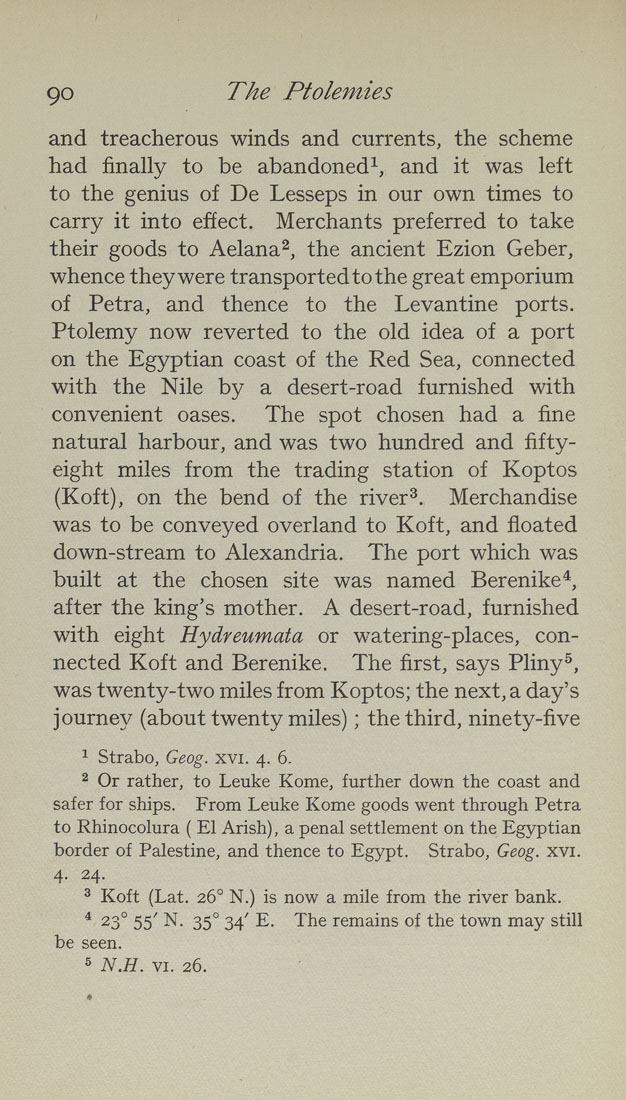90 The Ptolemies
and treacherous winds and currents, the scheme
had finally to be abandoned^, and it was left
to the genius of De Lesseps in our own times to
carry it into effect. Merchants preferred to take
their goods to Aelana^, the ancient Ezion Geber,
whence they were transported to the great emporium
of Petra, and thence to the Levantine ports.
Ptolemy now reverted to the old idea of a port
on the Egyptian coast of the Red Sea, connected
with the Nile by a desert-road furnished with
convenient oases. The spot chosen had a fine
natural harbour, and was two hundred and fifty-
eight miles from the trading station of Koptos
(Koft), on the bend of the river^. Merchandise
was to be conveyed overland to Koft, and floated
down-stream to Alexandria. The port which was
built at the chosen site was named Berenike*,
after the king's mother. A desert-road, furnished
with eight Hydreumata or watering-places, con¬
nected Koft and Berenike. The first, says Pliny^,
was twenty-two miles from Koptos; the next, a day's
journey (about twenty miles); the third, ninety-five
^ Strabo, Geog. xvi. 4. 6.
2 Or rather, to Leuke Kome, further down the coast and
safer for ships. From Leuke Kome goods went through Petra
to Rhinocolura ( El Arish), a penal settlement on the Egyptian
border of Palestine, and thence to Egypt. Strabo, Geog. xvi.
4- 24.
^ Koft (Lat. 26° N.) is now a mile from the river bank.
^ 23° 55' N. 35° 34' E. The remains of the town may still
be seen.
5 N.H. VI. 26.
|








